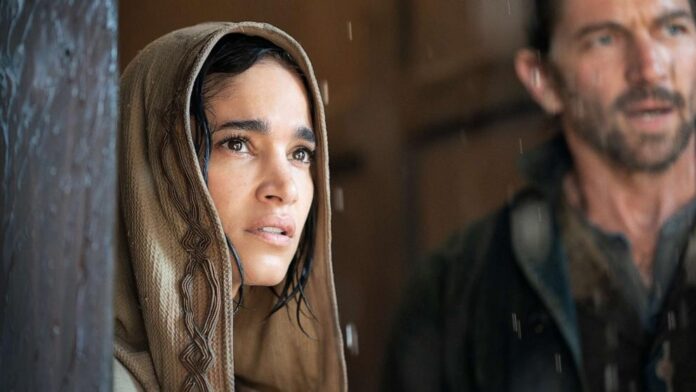
Rebel Moon Part One: A Child of Fire shows why some ideas are better left on the shelf. In 2013, Zach Snyder pitched a new, grittier addition to the Star Wars franchise. The Man of Steel director’s new sci-fi epic, Rebel Moon reveals what would have happened if Lucasfilm accepted Snyder’s idea.
Unfortunately, Rebel Moon also answers the question of why Lucasfilm rejected Snyder’s pitch in the first place. Rebel Moon teases characters, a world and a visual style that could have been part of a genuinely interesting sci-fi franchise, had these elements been given proper care and development.
The 135-minute epic fits comfortably into Snyder’s catalogue alongside films like 300, Watchmen and Batman v Superman, with plenty of slow-motion action scenes and a colourful CGI-infused visual style.
The story follows Kora, a former high-ranking member of the faceless evil empire “the Motherworld” (sci-fantasy cliché No. 1), who abandoned her post for a life in a simple farming village (sci-fantasy cliché No. 2). She must organize a rag-tag group to fight back (hat trick) when that village comes under threat from the cartoonishly evil Admiral Atticus Noble.
According to Snyder, his original Star Wars pitch was for a Seven Samurai-inspired story featuring a group of original characters. If Rebel Moon is indeed this concept’s final form, the term “original” may be a stretch.
The cast is full of generic sci-fi types. The long-haired Conan-the-Barbarian-like shirtless strongman, the sword-wielding assassin and the inexplicably Irish space scoundrel all feel more like archetypes than genuinely compelling personalities. Characters appear to be written more for conceptual appeal than depth or relatability.
Only Sofia Boutella’s Kora shows signs of deeper characterization, though that’s more attributable to the Algerian actress’s emotional performance than anything provided by the script. Kora seems more inclined to launch into lengthy monologues about her backstory and current emotional state than to let the audience fill in any blanks on their own.
To quote the Robot Devil from Futurama: “You can’t just have your characters announce how they feel […] that makes me feel angry!”
This tell-don’t-show approach drags down countless scenes throughout the film. Particularly blunt examples include the rebel Bloodax siblings explaining to each other why they were successful in the battles they both fought in, Space-rogue Kai’s speech about how he “might have once known what honour was” and Djimon Hounsou’s General Titus stating that the group’s final victory “gives voice to the voiceless” and will be “the beginning of something.” (Rebel Moon Part Two, anyone?)
Similarly to the surface-level characters, Rebel Moon’s visual style appears pretty at a glance but offers little thematic purpose. Kora’s home village has an unmistakable Viking look, with longhouses, rocky terrain and bearded characters with names like Sindri and Gunnar.
Considering the village people are presented as stand-ins for the hard-working farmers trapped under the regime of the Motherworld, this design choice could have been an opportunity to evoke real-world cultures marred by imperial oppression. Instead, it comes across as a set design that was meant to look cool and represent nothing.
In many ways, Rebel Moon wears its origin story on its sleeve. The opening narration explains the plot’s foundation, which could easily have been yellow text crawling through outer space. The following two hours of grimy cantinas, light-up swords and masked baddies with terrible aim all hint at a re-skin of material initially written for George Lucas’s universe.
Rebel Moon is a disappointingly unoriginal sci-fi film, composed of a collection of genre tropes and stock characters held together by an unchallenging rebels-versus-empire narrative. It fails to deliver upon the potential of an exciting new cinematic universe helmed by Snyder and leaves little anticipation for the already-announced sequel.
Rebel Moon Part One: A Child of Fire is streaming now exclusively on Netflix.
Feature image by Chris Strother/Netflix.





